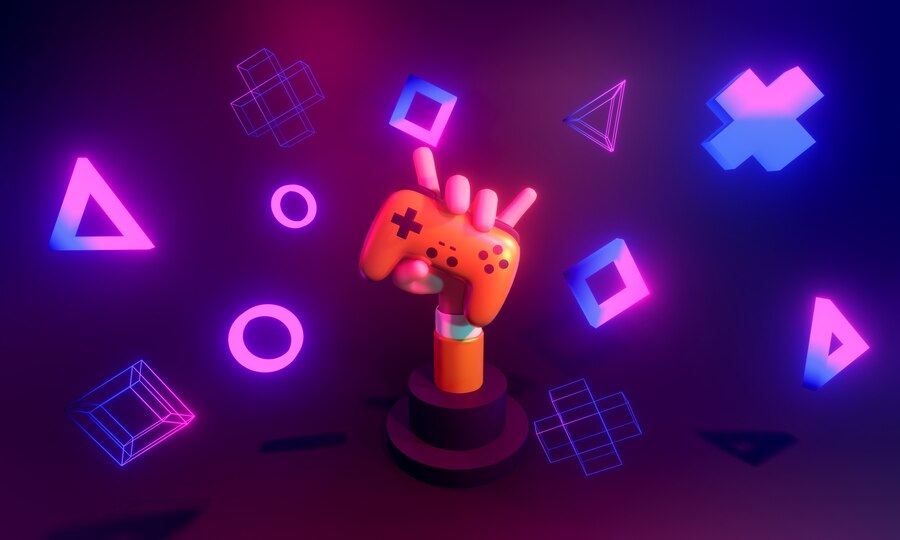The developments in game production have expanded remarkably since the beginning with developers extending their creative abilities alongside technological innovations. The fundamental difference in game development consists of 2D and 3D games. You must know how 3D game development differs from 2D game development when you develop games for iOS platforms as well as Android and multiple platforms. The article reviews significant distinctions between these two game formats to assist you in determining which format best matches your project needs.
1. Graphics and Visual Representation
2D and 3D game development differ most obviously through visual presentation methods that affect how objects appear on display screens.
The graphics in 2D games exhibit flat two-dimensional representations since characters and objects follow x and y-axis paths. The game categories that use 2D graphics encompass platformers together with side-scrollers and top-down models. The game development industry demonstrates the excellence of iOS game development and Android game development through classic examples including Super Mario Bros. and Angry Birds produced in 2D.
The development of 3D games entails the creation of virtual three-dimensional worlds in which objects navigate the x, y, and z planes. The main game genres within first-person shooters, open-world exploration, and racing simulation include Call of Duty and Grand Theft Auto titles.
The processing power required for making 3D games in iOS game development and Android game development surpasses that of 2D games. The game complexity and targeted devices determine the selection between 2D and 3D game development.
2. Development Complexity and Time Investment
2D or 3D game development complexity functions as a main aspect that establishes the necessary time frame and work needed to finish game production. The development process behind 2D games remains simpler due to its characteristics. Game developers work with Unity (2D mode included) as well as GameMaker Studio and Godot to build their 2D game resources including assets animations and levels. 2D assets enable quicker development because they are less complex compared to other resources thus developers can finish their work faster.
The complexity of 3D game development increases because developers need to handle the creation of both 3D models alongside animations along with proper lighting effects as well as simulated physics and texture work. Unity and Unreal Engine represent standard choices for game development but developers need additional time to create refined 3D games when compared to 2D games.
The decision between 2D and 3D content in iOS and Android game development hinges on a project’s financial resources along with its extent of development and obtainable resources.
3. Performance and Optimization
Performance levels play a crucial role during 2D-3D analysis of game development, especially within the contexts of iOS game development and Android game development.
The ease of performance for mobile devices exists predominantly with 2D Games because they use minimal processing resources. At a low computational cost for rendering together with physics calculations and animation, these games operate effectively on smartphones that are not updated.
The processing requirements of 3D games exceed 2D games because they need high-end graphical capabilities for advanced rendering physics functions and visual illumination. The system performance suffers major issues when running these games on mobile devices. To deliver a quality gaming experience developers should optimize their digital content while employing efficient rendering tools and maintain an equilibrium between gaming performance and visual presentation quality.
Performance optimization remains crucial during Android game development because of the numerous device types in the market. Since Apple devices feature uniform standards the process of game optimization remains streamlined during iOS development.
4. Cost of Development
Costs of developing 2D versus 3D games fluctuate widely depending on the size and level of excellence the game requires.
The development costs of 2D games stay low because they need fewer developing assets and basic gameplay elements. Indie developers along with small studios choose 2D gaming options because they require reduced development expenses.
The production expenses required for 3D game development become more expensive since it needs 3D modeling tools along with rigging capabilities animation functions and superior rendering methods. Professional 3D development and artistic work typically come at an expensive cost for project developers.
The main deciding factors in iOS and Android game development are the available funds alongside how sophisticated the games need to be.
5. Market Appeal and Player Engagement
Audience demands together with current market movements influence which type of game development (2D or 3D) should be selected.
2D Games: These games appeal to a broad audience due to their simplicity, nostalgic value, and accessibility. Multiple types of games which include mobile games and platformers as well as puzzle games successfully operate within the market currently.
3D gaming developments create deeper hypothetical worlds that draw people because they seek realistic interactions with detailed mechanics and extensive discoveries. Games like PUBG, Fortnite, and Genshin Impact showcase the success of 3D games in the modern gaming industry.
Audience preferences have a direct impact on which platform between 2D and 3D developers of iOS games and Android games should select.
Conclusion
Different development factors such as complexity and cost together with performance and market interests determine whether to select 2D or 3D game development. The fundamental distinctions between iOS game development and Android game development must be known by developers who make their next project choices. Gaming enthusiasts will find unique advantages from both simple 2D mobile gaming and immersive 3D gaming experiences in the industry. Contact us for more details.
Frequently Asked Questions

1. Developing games with a three-dimensional design requires greater difficulty than developing games using two-dimensional methods.
The complexity of developing 3D games rises since game developers need to master both 3D model creation and physics systems and camera control. Thanks to contemporary game engine platforms game development for three-dimensional products has become simpler to implement.
2. Mobile games benefit from 2D development or from 3D creative methods.
Technical benefits of 2D games combined with hardware requirements of 3D games result in two different solutions that can choose based on the looking for.
3. What stands as the optimal choice between the multiple game engine options available for producing 2D and 3D games?
GameMaker Studio together with Unity and Godot represent high-quality options to develop 2D games. Ordinary game developers choose Unity and Unreal Engine as their 3D development platforms.
4. Developing games in 3D const Elevates Prices beyond 2D Game Development Costs
The expense of 3D game development rises because developers need to invest more resources to create assets and animate them along with extending development schedules.
5. Indie developers should decide whether they should create 2D or 3D games.
Two-dimensional games serve as a typical first option for indie developers because they need fewer resources and development speed is increased. Once developers gain more experience while accumulating sufficient funds they should consider transitioning from 2D to 3D game development to enable work on complex projects.

